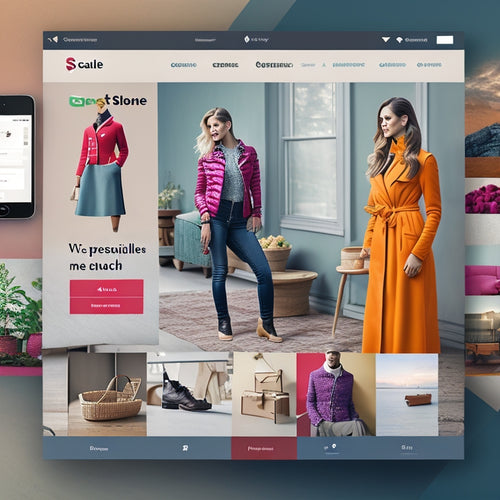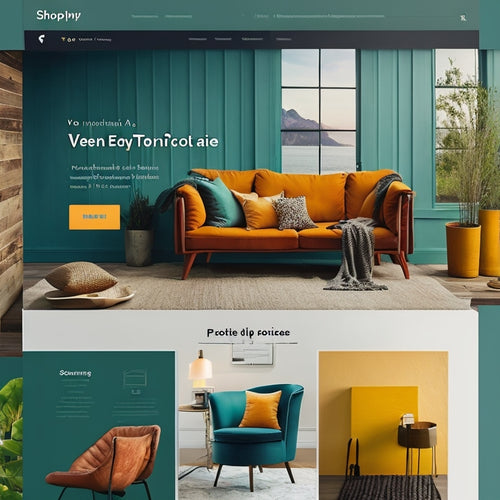
Revolutionize Shopping Experience With Shoppable Store Locators
Share
Shoppable store locators are transforming the retail landscape by providing a unified brand experience across online and offline channels. With 75% of consumers preferring a seamless online and in-store shopping experience, shoppable store locators offer personalized recommendations, streamlining the shopping journey and fostering engagement. By optimizing store locator strategies, retailers can drive conversions and foot traffic, gaining valuable insights into customer behavior and preferences. As the shopping experience becomes a key differentiator in purchasing decisions, shoppable store locators are essential for retailers looking to stay competitive and elevate their overall shopping experience - and that's just the beginning.
Key Takeaways
• Shoppable store locators offer personalized product recommendations, streamlining the shopping journey and fostering engagement.
• Interactive maps guide customers through the store, helping them locate products quickly and easily.
• 71% of consumers prefer personalized experiences, and shoppable store locators deliver tailored suggestions based on individual preferences.
• Data-driven insights from shoppable store locators optimize store layouts, strategies, and marketing campaigns for increased conversions and foot traffic.
• Seamless online-to-offline shopping experiences built with shoppable store locators drive loyalty, trust, and satisfaction among customers.
Omnichannel Shopping Redefined
By seamlessly integrating online and offline channels, modern consumers are redefining the shopping experience, expecting to purchase products whenever and wherever they want, and demanding a unified brand experience across all touchpoints.
This shift has led to the rise of omnichannel shopping, where consumers navigate between online research, in-store browsing, and digital purchases. To stay ahead, retailers must provide a cohesive experience across all channels.
Interactive maps, for instance, can help customers locate products in-store, while also offering retail insights on foot traffic and customer behavior. By leveraging these insights, retailers can optimize their store layouts, inventory, and marketing strategies to meet the evolving demands of modern consumers.
Unlocking Retail Ecommerce Potential
With the rise of omnichannel shopping, accessing retail ecommerce potential has become crucial for CPG brands to capture a greater share of wallet at retail. Retail innovation is no longer a nice-to-have, but a must-have to stay competitive.
By leveraging ecommerce integration, brands can discover new revenue streams, increase brand awareness, and drive sales. According to a recent study, 75% of consumers prefer to shop online and in-store, highlighting the importance of a seamless omnichannel experience.
Seamless Customer Experience
A seamless customer experience is critical to driving loyalty and repeat business, as 71% of consumers are more likely to recommend a brand that provides a personalized experience.
Shoppable store locators can make all the difference by offering personalized recommendations, streamlining the shopping journey, and fostering customer engagement. By providing customers with a hassle-free experience, brands can build trust, boost satisfaction, and ultimately, drive sales.
With a shoppable store locator, customers can effortlessly find products in-store, receive real-time inventory updates, and enjoy a cohesive online-to-offline shopping experience. By putting the customer at the forefront, brands can create a loyal customer base that will keep coming back for more.
Data-Driven Retail Strategy
Retailers that leverage data-driven insights can optimize their store locator strategies to drive conversions, increase foot traffic, and boost sales. By harnessing the power of data analytics, retailers can gain a deeper understanding of their customers' behavior and preferences. This enables them to create targeted marketing campaigns that drive customer engagement and ultimately, sales.
-
Analyze customer behavior and preferences to create personalized shopping experiences
-
Use data-driven insights to optimize store locator placement and design
-
Leverage data analytics to measure the effectiveness of marketing campaigns and adjust strategies accordingly
- Utilize data to identify areas of improvement in the shopping experience, and make data-driven decisions to enhance customer engagement.
Elevating Retail Shopping Experience
Nearly 70% of shoppers consider the shopping experience an important factor in their purchasing decisions, making it essential for retailers to prioritize elevating their retail shopping experience.
By incorporating innovative technologies, retailers can create an immersive and engaging experience that drives sales and loyalty. One effective strategy is to provide personalized recommendations, tailored to individual preferences and shopping habits.
Interactive maps can also be used to guide customers through the store, highlighting relevant products and promotions. By leveraging these tools, retailers can create a seamless and enjoyable shopping experience that sets them apart from the competition.
Elevating the retail shopping experience is no longer a nicety, but a necessity for retailers looking to stay ahead in today's competitive market.
Frequently Asked Questions
How Often Does Pear Update Its Inventory Scanning for Retailers?
Pear updates its inventory scanning for retailers daily, ensuring accurate and up-to-date information for customers. This frequent inventory update frequency enables effective retailer inventory management, providing a seamless shopping experience.
Can Pear's Technology Be Integrated With Existing Ecommerce Platforms?
"Integration concerns? Put them to rest! Pear's technology seamlessly integrates with existing ecommerce platforms, ensuring platform compatibility and ease of use, so you can focus on elevating your shopping experience."
What Is the Average Increase in Sales for Brands Using Pear's Platform?
Brands using Pear's platform typically experience an average sales growth of 25%, driven by enhanced customer engagement, improved conversion rates, and increased brand loyalty, resulting in a significant boost to their bottom line.
How Does Pear's Platform Handle Out-Of-Stock Products at Retailers?
Pear's platform dynamically updates inventory in real-time, ensuring accurate product availability. When out-of-stock issues arise, Pear's technology triggers customer communication strategies, such as redirecting shoppers to nearby in-stock retailers, to mitigate inventory discrepancies and enhance the shopping experience.
Are There Any Setup Fees or Costs Associated With Implementing Pear's Technology?
"Like a puzzle piece, our technology seamlessly integrates into your existing infrastructure, with a cost comparison that's as clear as day: no setup fees, just a streamlined implementation process that gets you up and running quickly."
Related Posts
-
Shopify SEO Checklist: Beginner Guide Into Ecommerce SEO
This article provides a beginner's guide to Shopify SEO, focusing on the ecommerce aspect. It outlines the benefits ...
-

Expand Your Shopify Store With Top Sales Channel Apps
The integration of sales channel apps into the Shopify platform offers an opportunity for businesses to expand their...
-

Customizable Contact Form Apps for Shopify
Customizable contact form apps for Shopify offer a range of features and customization options that enhance the func...

